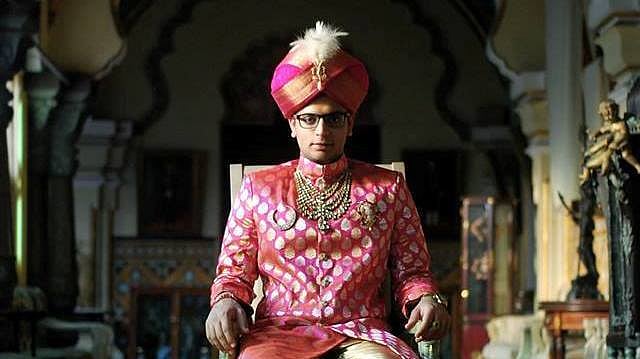Mysore’s Game of Thrones: A New Maharaja Ascends the Throne
The people of Mysore are getting ready to welcome the new heir of the Wadiyar Dynasty. Here’s all you need to know.

advertisement
Today, the people of Mysore are getting a new king, with the ascent of yet another Wadiyar (Wodeyar). In pre-independence times, several Wodeyar kings modernised Mysore state, then comprising of parts of present-day Karnataka, Kerala and Tamil Nadu. They were patrons both of the arts and sciences.
Who’s the New King?
Yaduveer Krishnadatta Chamaraja Wadiyar is the grand-nephew of the previous king, Srikantadatta Narasimharaja Wadiyar, who passed away on 10 December, 2013 from a cardiac arrest.
He studied Economics at Boston University and will leave to pursue further studies shortly after Mysore’s legendary Dussera celebrations.
Legacy of the ‘Wodeyars’
In Kannada, Wadiyar or Wodeyar literally translates to ‘Lord’ or ‘Lordship’. The Wadiyar Dynasty traces its roots back to the Yadavas of Dwaraka who came to Karnataka and made Mysore their abode after seeing its sheer beauty.
The Wadiyars of Mysore are the only Royal family, in India’s approximately 5000-year old history, to have ruled a kingdom for more than 500 years. The Kingdom of Mysore was one of the most progressive Princely States in India. And the benevolent Wadiyars are well-loved by the people of Mysore till date.
The Late Maharaja of Mysore
Prince Srikantadatta Narasimharaja Wadiyar Bahadur who ascended the Wadiyar Throne in 1974 and passed away without naming an heir in December 10, 2013, was a former Member of Parliament from the Mysore constituency, a fashion designer and an avid cricket lover who also served as the President of the Karnataka Cricket Association.
‘Coronation’
Yaduveer Krishna Datta Chamaraja Wadiyar will be crowned on May 28 in Karkataka Lagna between 9.25am and 10.38 am.
– Maharani
Pramoda Devi Avarur (Reported by State of
Mysore)
The rituals for the coronation of the Maharaja of Mysore have already begun at the Mysore Palace. 40 priests will perform the special rituals for the coronation which will be carried out at Kalyana Mantap and Durbar Hall of the Palace. The last coronation ceremony took place 41 years ago.
Illustrious Ancestry
The Democratic Maharaja!
In 1881, Chamarajendra Wadiyar X (1868–1894) instituted the Representative Assembly of Mysore State. It was the first modern, democratic legislative institution in princely India thereby leaving an indelible mark on the Kingdom of Mysore and consequently on the state of Karnataka.
The Queen Regent
Queen Regent Kempa Nanjammani Vani Vilasa Sannidhana (1894–1902) helped Mysore progress in all fields, from the generation of electricity from the Cauvery River, promotion of the Indian Institute of Science, the construction of the new palace, a new dam, the supply of water through pipes and laying of the foundation stone of Victoria Hospital in Bangalore.
Mysore’s Karnataka’s Modernizer
Krishna Raja Wadiyar IV (1894–1940) was a philosopher-king, seen by British theosophist Paul Brunton as living the ideal expressed in Plato‘s Republic. He was a great patron of the arts as well as science and a philanthropist. And in essence laid the foundation of what is today the modern state of Karnataka.
He also had a personal fortune estimated in 1940 to be worth $ 400 million, which would today be around $ 60 billion or more.
The ‘erstwhile’ Maharaja of Mysore
Jayachamarajendra Wadiyar (1940–1950), the 25th was the last Maharaja of the princely state of Mysore. The titles were de-recognised in 1971 after the abolition of the privy purses. He was the last remaining living prince of the Indian Empire with a 21-gun salute until his death in 1974.
He was a noted philosopher, musicologist, political thinker and philanthropist and his range of achievements is best gauged by pointing out the fact that he was the first President of the Philharmonia Society in London and also the Founder-President of the Vishva Hindu Parishad aka VHP.
The New ‘Wodeyar’ of Mysore
Yaduveer has some really big shoes to fill and so he’s already spoken about his plans to promote travel and tourism in the region.